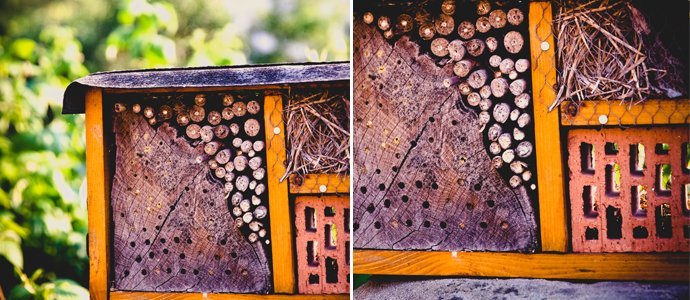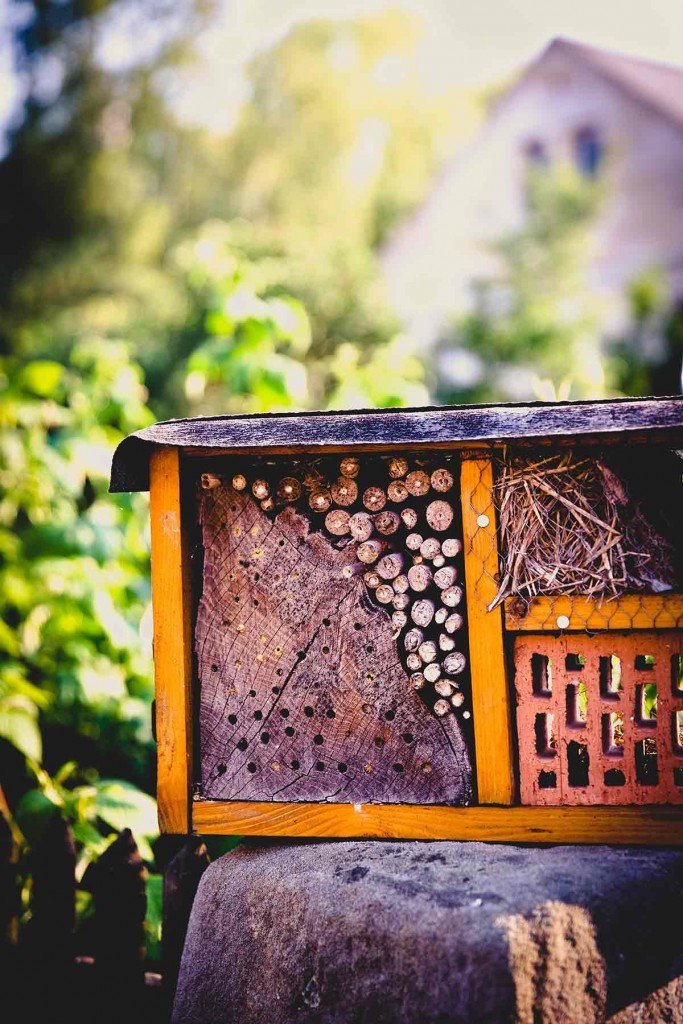
The vanishing population of bees and other beneficial insects is a threat to gardens and ecological balance in general. Attracting insects that are useful for pollination and the reduction of destructive pests provides the chance to sync with nature.
Inviting beneficial insects (BIs) to promote the natural harmony of your outdoor environment – whether it is a small yard, farm or ranch – is achievable with insect hotels. These anthropodal lodgings are not simply functional, but also add aesthetic quality to any landscape. In addition, building these complements to sustainable gardening offers the opportunity for an engaging and fun experience.
Supporting Ecosystems With Functional Art
Beneficial insects are landscapers, recyclers and housekeepers. As nature’s little cargo carriers, they enable one-third of food crops to produce fruit and seeds. As part of the waste reduction team, they help clean unwanted debris and contribute to composting with their voracious appetites. These attributes eliminate the need for artificial fertilizers and toxic pesticides.
Harmful insects truly are pests. Destructive insects (DIs) destroy plants, flowers, crops, trees and more. Many carry diseases that impact both humans and animals.
Giving a helping hand to small collaborators with big capabilities is therefore in the best interests of human, animal and insect communities. When the days turn cold, accommodations offer a place to hibernate. When spring ignites, the BIs are in place, ready for deployment.
In warmer seasons, the hotel provides your BIs with a functional nest. When winter hangs up its coat and the days become longer, insect hotels are an elegant way to join forces with nature.
Hotels are relatively easy to construct. Building a healthy colony, however, requires some consideration prior to getting started.
Biodiversity Requires Diversity
It is important to understand that your champions work symbiotically with the pests you are trying to manage. What this means is that noticing pests around your hotel is a sign that it is doing its job. Your BIs will abandon their lodgings if their harmful cousins are extinguished. Therefore, ensuring that there is an adequate population of vermin is critical to supporting the defenders’ habitat.
Accordingly, it is crucial to distinguish between the insects that are your friends and those that are detrimental. Aphids tend to be the most common enemy, but many others can be just as destructive. Termites, bedbugs, borers, weevils, maggots, ticks, mites and certain types of beetles and caterpillars can be equally as devastating to fruits, plants, flowers and vegetation.
For instance, bean, elm and dogbane leaf beetles tend to be tiny in size, but mighty in their capacity for destruction. Their smaller size often causes them to be missed before proactive steps can be taken to control them. At a minimum, they impair seed quality; at their worst, they can cause the death of entire forests. Mountain pine beetles exemplify the destructive potential of some beetles. These beetles are responsible for the devastation of huge swaths of high-elevation forests across the American West that has resulted in the elimination of critical ecosystems.
Nurturing a collective of BIs can provide strong immunity against attackers. The Praying Mantis, for example, has a robust appetite and longer life cycle than other BIs. The tradeoff is that it takes up to six months for them to reach sexual maturity where they can lay eggs for the next generation to continue the good work. In the meanwhile, many adults will have succumbed to predators, harsh weather and other adverse conditions. Hazel shrubs, raspberry, cosmos and pine are a few varieties of plant life that can fortify their habitat.
Soldier Beetles are very helpful in combatting aphids, spider mites, caterpillars and beetle larvae. Hydrangea, wild lettuce, goldenrod and milkweed all provide hardy sustenance for these complementary hotel residents.
Ladybugs are perhaps the most popular of the BI class. They commonly enjoy snacking on aphids, mites and mealybugs among other insect treats. Ladybugs enjoy the comfort of yarrow, Queen Anne’s lace, marigolds, fennel, dill, coriander and dandelions among other habitat staples. While they do consume many DIs, they are unfortunately most vulnerable to their predators, particularly ants.
Native bees are strong defenders and should not be confused with honeybees. Most native bees do not sting. They are beneficial for destroying the larvae of many DIs, while providing invaluable pollination, which makes them a natural understudy for the diminishing honeybee population.
Now that you understand who should reside in your insect hotel and what infrastructure they require in order to thrive, you are ready to begin the construction of their shelter.
Tiny Houses or Resort?
Whether your preference is a single, small structure or a more elaborate insect hotel, the design is entirely your choice. Some people will prefer a more polished look, while others will opt for the natural appearance of insect-style earth homes. What is important is to be creative, enjoy the process, and be acquainted with a few core requirements.
Drainage: Whichever type of material you use – wood, rock, tile, reeds, bamboo or any other – tight seams are not necessarily optimal. Moisture needs to be able to escape since many of the BIs in your collective are seeking dry areas. Therefore, you will need to ensure the ability of water to drain, while preserving the integrity of its shielding qualities.
Pierced block and bores drilled into logs satisfy this requirement. Native bees, in particular, need this protection, which is why they tend to prefer sand and clay. Terra cotta shards and unused pots filled with sand that are embedded into your structure will attract bees and promote a healthy environment for all inhabitants. Perforated brick also makes an excellent addition for these reasons.
Adequate room: In order to accommodate the physical features and sensitivities unique to each inhabitant, you will need to consider their ability to enter the structure and reside within in it without suffering injury. For example, holes drilled into logs will attract bees. Bee burrows need to be sanded so that rough surfaces do not damage their fragile bodies.
Holes should be drilled at a downward angle to prevent rain from entering the shelter, but care should be taken to avoid drilling through the opposite side. On the other hand, butterflies prefer the enclosure that leaves and crevices provide, as long as their delicate wings are taken into account. Twigs, straw and leaves are good bedding for ladybugs, earwigs and other similar roommates. Knowing which BIs you want to attract will help guide you in tailoring the construction that is most appropriate to suit their needs.
Natural materials: Using recycled, untreated materials will enhance the overall environmental health of your hotel. It is particularly important to avoid the use of insect repellants since DIs are integral to the success of your insect refuge.
Think horizontally: Ensure that the placement of your items is parallel to the ground. This will provide additional protection for your tenants.
Decorating: Accessorizing your refuge adds aesthetic appeal, especially if your structure is going to be visible. Decorations are virtually limitless. Ornaments can include pine cones, dried flowers, natural fiber rope, sea glass, moss, old pencil holders, tins filled with bark, old tools, jars, thread spools, discarded toy blocks, paper towel and toilet paper inserts, cardboards and newspapers that you can roll into tubes – almost anything that is natural and compatible with the BI’s physical attributes.
Supports: Larger structures need a roof and typically require shelving.
Location, location, location: As with any enterprise, you will need to position your hotel where it can receive the morning sun. Also important is to locate it near to where you want your BIs to be active. Finally, you will need to consider arranging it in an area that offers some additional protection against gusty winds, driving rain or the beating sun. Adding chicken wire can offer supplementary defense not just from harsh elements, but also from curious birdlife.
Creating the invitation needed to attract your new residents is just the beginning. As with any structure, you will need to maintain it, and perhaps even make a renovation or two. In the meanwhile, you will have expanded your integration with nature as an ally, promoting balance and a healthy environment.













